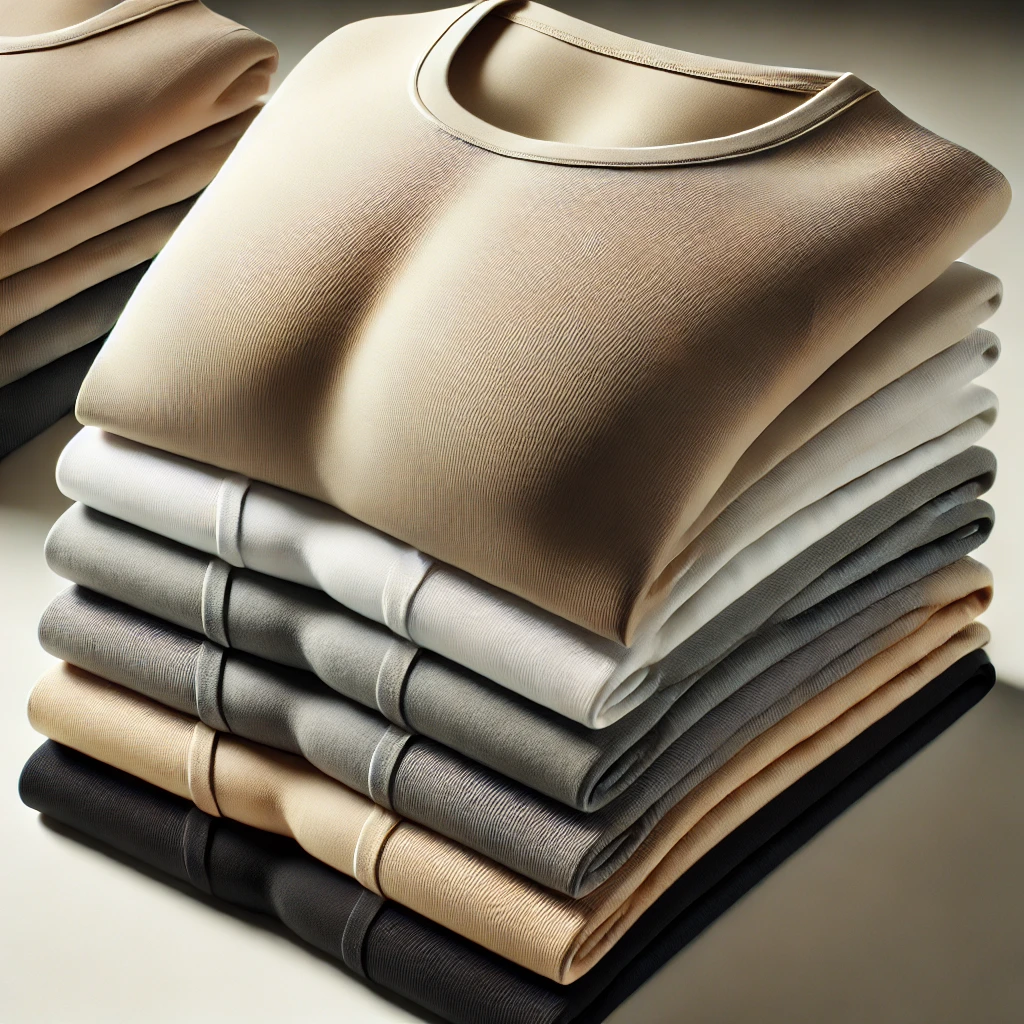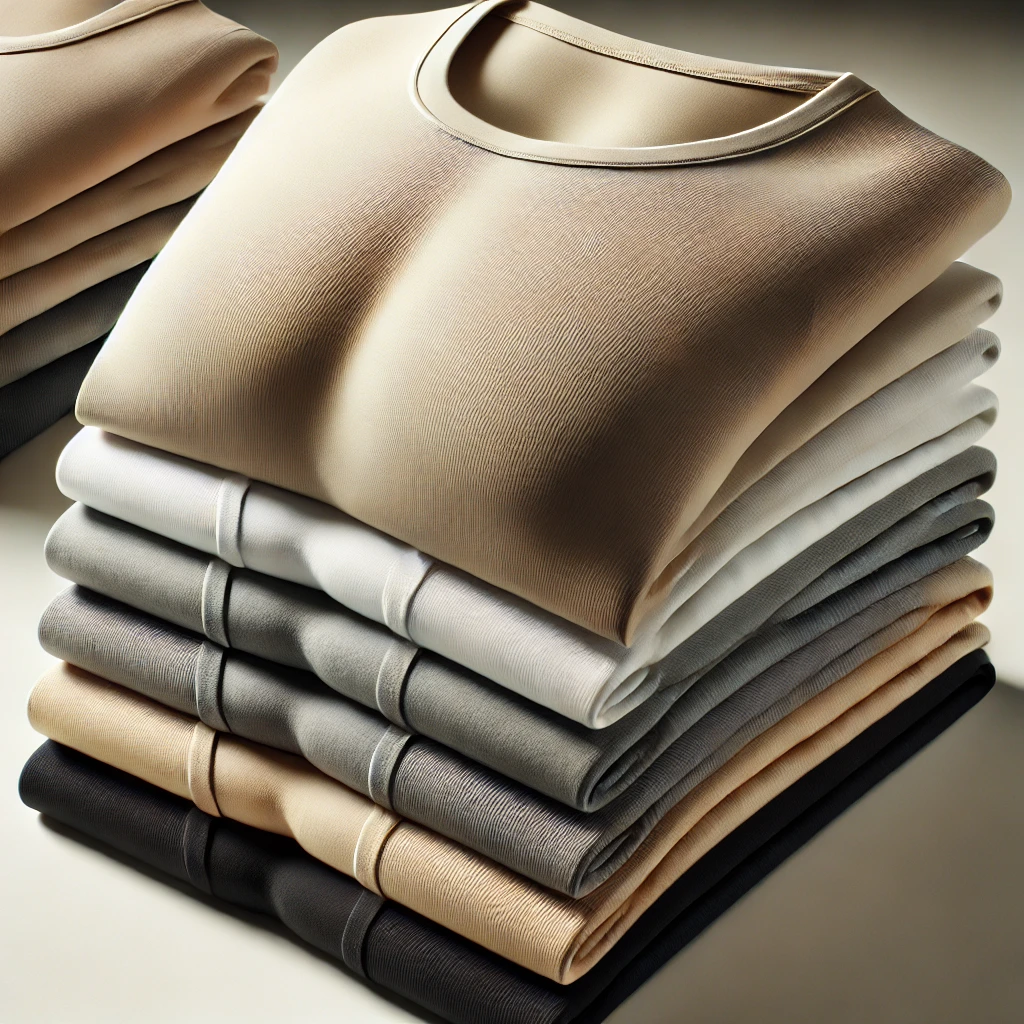
Choosing the right undershirt is crucial for maintaining a clean and professional look while ensuring maximum comfort. However, the wrong undershirt can lead to visible lines, excessive heat, and discomfort throughout the day. White dress shirts, in particular, often present challenges such as transparency and fabric clinging to the skin.
This article will guide you through selecting the perfect undershirt for dress shirts, focusing on preventing transparency, optimizing comfort, and making the best choice for different situations. We will cover color selection, materials, fit, and styling recommendations to help you find the ideal undershirt.
Why Should You Wear an Undershirt with a Dress Shirt?
To Prevent Sweat and Skin Oils from Staining the Shirt
Wearing an undershirt acts as a barrier that absorbs sweat and prevents skin oils from directly transferring to your dress shirt. This is particularly important during hot weather or long workdays. For example, without an undershirt, the armpit area of a white dress shirt may turn yellow due to sweat buildup, but a high-quality moisture-wicking undershirt can significantly reduce this issue.
To Minimize Transparency and Maintain a Clean Appearance
White dress shirts are often slightly transparent, which can expose skin or the outlines of an undershirt. This is especially problematic in professional settings. Choosing the right undershirt color and material ensures that the shirt appears smooth and polished without distractions.
To Enhance Comfort Throughout the Day
Undershirts provide an additional layer that helps regulate body temperature. In the winter, thermal undershirts help retain warmth, while in the summer, moisture-wicking undershirts keep you dry and cool. For example, during the hot months of a business-casual dress code, wearing a lightweight, quick-drying undershirt can prevent excessive sweating and discomfort.
How to Choose the Right Undershirt Color
Beige Is the Best Choice for White Dress Shirts
Many people assume that a white undershirt is the best match for a white dress shirt, but this often leads to visible outlines. White fabric reflects light, making the undershirt stand out. Instead, a beige or nude-colored undershirt blends more seamlessly with your skin, making it less noticeable.
Choosing Colors That Minimize Transparency
The ideal undershirt color depends on the shade of your dress shirt. For example, light gray undershirts work well under gray dress shirts, while navy or black shirts pair best with dark-colored undershirts. This ensures that the undershirt remains invisible while maintaining a sleek appearance.
Colors to Avoid
Bright colors and patterned undershirts should generally be avoided, as they can be visible through lightweight fabrics. Additionally, black or navy undershirts can create a strong contrast under white shirts, making them highly noticeable. Opting for neutral, solid colors is the safest choice.
The Impact of Undershirt Materials on Comfort
Cotton vs. Synthetic Fabrics: Pros and Cons
Cotton undershirts are known for their softness and excellent breathability, making them comfortable for all-day wear. However, they tend to retain moisture, which can feel heavy and damp in hot conditions. Synthetic fabrics like polyester or nylon, on the other hand, offer superior moisture-wicking properties but may feel less natural against the skin.
Benefits and Drawbacks of Moisture-Wicking Undershirts
Moisture-wicking undershirts are designed to quickly absorb and evaporate sweat, keeping you dry. They are particularly beneficial for active individuals or those working in warm environments. However, these fabrics may lack insulation, making them less ideal for colder seasons.
Best Materials for Different Seasons
For summer, lightweight, moisture-wicking materials like polyester or nylon provide optimal comfort. In winter, thermal fabrics such as wool-blend undershirts or fleece-lined options offer extra warmth. Silk undershirts are also a versatile choice, providing a smooth and breathable feel year-round.
How Undershirt Styles Affect Fit and Appearance
V-Neck vs. Crew Neck: Which One Is Better?
A V-neck undershirt is ideal when wearing an open-collar dress shirt, as it remains hidden beneath the shirt. Crew neck undershirts, however, work best when wearing a fully buttoned-up dress shirt with a tie, as they provide a clean neckline.
Tank Tops vs. Short-Sleeve Undershirts
Tank tops may seem like a good option in hot weather, but they fail to absorb underarm sweat, leading to potential staining on your dress shirt. Short-sleeve undershirts offer better protection while maintaining breathability.
Are Long-Sleeve Undershirts a Good Choice?
Long-sleeve undershirts are beneficial in colder months, adding an extra layer of warmth. However, they can create bulkiness under a dress shirt, making them less suitable for slim-fit styles.
Recommended Undershirts for Different Occasions
Best Undershirts for Business Attire
For a professional setting, choose a snug-fitting beige or light gray V-neck undershirt made from moisture-wicking fabric. This ensures that it remains invisible under your dress shirt while keeping you comfortable throughout the day.
Best Undershirts for Casual Wear
When wearing an unbuttoned dress shirt casually, a high-quality cotton or bamboo undershirt works well. These materials provide a soft feel and a relaxed appearance.
Undershirt Etiquette for Formal Events
In formal settings, opt for an ultra-thin, fitted undershirt that remains completely hidden. Avoid thick, bulky fabrics that might create wrinkles or lines beneath your dress shirt.
Conclusion
Choosing the right undershirt is essential for achieving a polished and comfortable look. Factors such as color, material, and style all play a role in ensuring your dress shirt remains crisp and presentable. Whether for business, casual, or formal wear, selecting an appropriate undershirt enhances both your confidence and overall appearance.



Comment